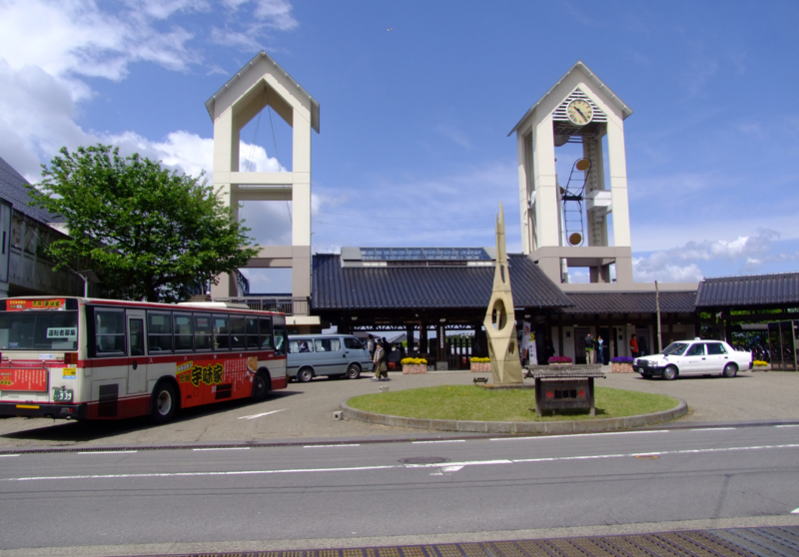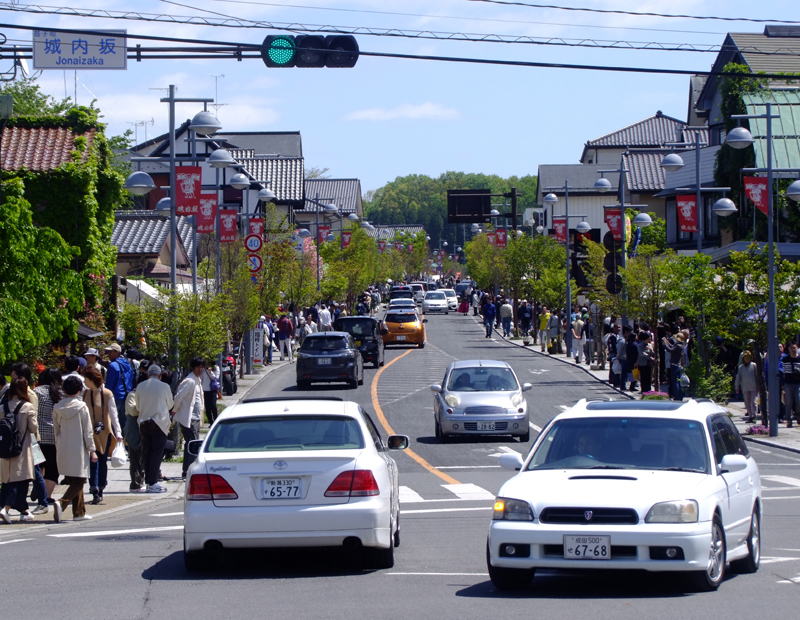Ceramic Fair outside the Seibu Ball Park (May 2011) Ceramic Fair at Koganei Park (September 2011) |
| Return to Top Page |
GREAT CERAMIC FAIR (Dai-toukiichi)
Please confirm the information before you go at the web page and the telephone
number listed
| The fair exhibits and sells about 100,000 ceramics, earthenwares and lacquerwares
made by producers all over Japan. Items include daily table wares and dining
utensils such as bowls, teapots, dishes, basins, tea cups, rice bowls,
flower vases and basins, chopsticks, etc. Visitors can enjoy Japanese traditional
ceramics, earthenwares, lacquerwares and can purchase them at bargain prices.
This event takes place at times throughout the year at various places of
Japan. URL: http://dai-toukiichi.com/ I Next Dai-Toukiichi is at Kasamatsu Sports Park, Hitachi Naka City, Ibaraki Prefecture, Nov. 1-Nov. 9, Time: 10 a.m. to 5 p.m. Access: Kasamatsu Undo Koen Daitoukiichi Telephone: 0956-59-6572/ 090-4777-6520 |
Ceramic Fair outside the Seibu Ball Park (May 2011) Ceramic Fair at Koganei Park (September 2011) |
POTTERY TOWN MASHIKO
(Photos April 29, 2016)

Mashiko Train Station (Mouka Railways)
| Mashiko is a town on top of rolling land located in the northern part of the Kanto
Plain and the southeastern part of Tochigi prefecture. It is about 100
k.m. north of Tokyo. Blessed with beautiful nature in all four seasons
and situated atop a gentle, undulating land, this town is rich with clay
used for creating quality earthenware, Mashiko-yaki, the earthenware made
in Mashiko gradually emanates a warmth when held in one's hands. (from
Mashiko Town tourist guide pamphlet) The local Mashiko ware was produced here since 1853 when Keizaburo Otsuka who was born at a village near Kasama acquired techniques of pottery productions there opened a kiln in Mashiko. Mashiko earthenwares became famous by Shoji Hamada (1881-1938) - Japan's most reneowned potter and a major figure in the Japanese folk crafts movement. Hamada was born in Kanagawa Prefecture and studied at Tokyo Industrial College. In 1920 he accompanied Bernard H. Leach to England and helped establish The Leach Pottery in St. Ives, Cornwall. He returned to Japan in 1924 and settled in Mashiko, a pottery center since the latter part of Edo period (1600-1868). Though his technical education was highly advanced, Hamada used only traditional Mashiko glazes made of local clay, stone and various type ash, as well as underglaze pigments, over enamels and salt glaze. (Kodansha Japan Encyclopedia) URL: Mashiko Tourist Association |
Shoji Hamada Memorial Mashiko Sankokan Museum
| An exhibition pavillion that includes parts of Shoji Hamada's home which
he used as his atelier to create ceramics. |
Mashiko Museum of Ceramic Art
| Besides a permanent exhibition of the works of Shoji Hamada, Tatsuzo Shimaoka, Bernard Leach and other master ceramic artists, there are also special exhibitions and
events are going on. Thematic Exhibition: Ken Matsuzaki Ceramic Art Exhibition, Oct. 5-Jan. 12 Website: http://www.mashiko-museum.jp/ Hours: 9:30 a.m.-5 p.m. (closed on Mondays and Year End and New Year holidays Dec. 25-Jan. 1/Open all days during the golden week until May 5. May 9 and 10 closed) Access: Mashiko Station on Mouka Railways Admission: 600 yen Telephone: 0285-72-7555 |

| Pottery Fair/Festivals at Mashiko started in 1966. It is held two times a year in spring during the Golden Week holidays (late April to early May) and in autumn in November. Approximately 500 tents dealers and about 50 permanent pottery stores line the main street of Mashiko's Jonaizaka Street for about 500 meters. Mashiko potteries are sold from traditional Mashiko earthen wares such as daily necessities cups and dishes to artistic pottery products. In the spring festival 2015, 350,000 people visited the town for eight days. Permanent stores of Mashiko wares are open all days throughout the year. Mashiko Pottery Fair - April 27-May 6, 2024 URL: Mashiko Pottery Fair (Japanese) URL: Mashiko Pottery Fair (English) Fesitval Period: April 27 through May 6 in 2019. Everyday during the festival from 9 a.m. to 5 p.m. Access: Mashiko Station on Mouka Railways Telephone: 0285-70-1120 (Mashiko Kanko Kyokai) |